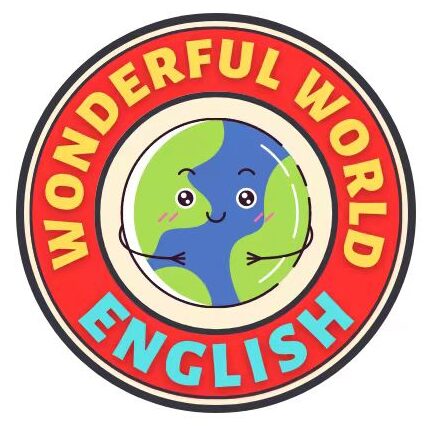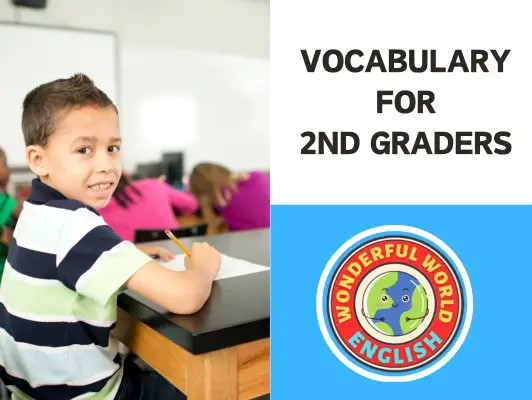
Meet David De’ Ath, founder, editor, and writer at Wonderful World English. With his extensive background as an English teacher, David provides valuable insights and practical tips on ESL for students and teachers alike.
Developing a strong vocabulary is an essential step in a second grader’s learning journey.
At this stage, children expand their reading skills and begin to encounter a broader range of texts in various subjects.
Introducing them to a wide array of vocabulary words enhances their language abilities and sets the stage for improved reading comprehension and communication skills.
The mastery of new words at this level involves exposure to terms across different themes, from everyday vocabulary to academic concepts.
Second graders are encouraged to learn action verbs, descriptive words, and nouns to enrich their speaking and writing.
These words help them express their thoughts more precisely and engage in storytelling in more detail.
It’s not just about memorizing words; it is about understanding their meanings, learning how to use them in context, and recognizing their significance in various subjects such as math for counting and numeracy, social studies for community-related terms, and science for new terminology about the natural world.
Engaging with this plethora of words prepares children for more complex language tasks ahead.
Key Takeaways
- Building vocabulary aids in enhancing second graders’ communication and reading comprehension.
- Exposure to a range of words across different subject areas enriches a child’s language skill set.
- Mastery of vocabulary is more than memorization, extending to contextual use and understanding.
Basic Vocabulary Development
Effective vocabulary development in second graders hinges on consistent engagement with words through reading, writing, and skill-building activities.
Teachers and caregivers must focus on three core areas to facilitate this growth: word recognition, understanding spelling patterns, and mastering pronunciation guidelines.
Word Recognition
Word recognition is fundamental to reading fluency.
Second graders should be encouraged to identify and read words that are common in their grade level.
Utilizing educational games and activities can make this process enjoyable and more effective. For example, they may use:
- Flashcards with high-frequency words
- Word-matching games that reinforce visual memory
Spelling Patterns
Understanding spelling patterns contributes to both reading and writing skills.
At this stage, children learn to spell by recognizing patterns rather than memorizing individual words.
This understanding is reinforced by practices such as:
- Sorting words into groups by common phonetic elements (e.g., -at, -an, -it)
- Seeking patterns in lists of spelling words and using them in writing activities
Pronunciation Guidelines
Clear pronunciation guidelines are vital for effective communication.
Second graders strive to articulate words correctly, improving their confidence and speaking abilities.
They benefit from:
- Phonics exercises that connect sounds to spelling
- Practice with rhymes and alliteration to master subtle sound distinctions
Cultivating these areas steadily enhances a second grader’s ability to read, write, and communicate with growing proficiency.
Action Words and Verbs
Action words, or verbs, are fundamental to constructing sentences that describe what a subject is doing.
In the second grade, students expand their vocabulary with verbs that express simple actions and movements, enhancing their writing and communication skills.
Simple Actions
Run, walk, and jump are basic action verbs that second graders will commonly use. These words describe straightforward physical activities:
- Run: She runs to catch the bus every morning.
- Walk: They walk their dog in the park.
- Jump: He jumps over the puddle.
These verbs form the foundation of a child’s action word vocabulary, allowing them to articulate actions in their daily lives.
Movement Verbs
Movement verbs take the concept of action a step further by describing specific types of motion. Here is a brief list highlighting a few common movement verbs:
- Glide: The skater glides across the ice.
- Skip: The children skip down the sidewalk.
- Hop: The frog hops from lily pad to lily pad.
- Crawl: The baby crawls across the carpet.
Incorporating a variety of movement verbs helps children to portray actions with greater clarity and precision.
For some top suggestions to boost vocabulary in the classroom while having fun, check out the link below!
Related: Fun Vocabulary Activities: 10 Ways to Boost Word Skills
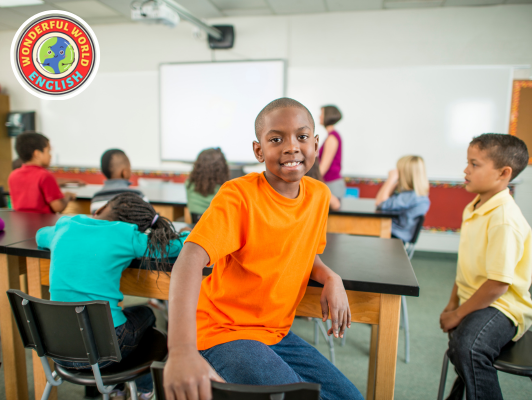
Descriptive Words
Descriptive words play a crucial role in expanding a second grader’s vocabulary, enabling them to articulate their thoughts and feelings with precision.
These words, particularly adjectives and adverbs, allow young learners to detail characteristics such as size, color, and shape, and express concepts like speed.
Adjectives
Adjectives are words that describe or modify nouns and pronouns.
They provide details that paint a clearer picture of the subject being talked about.
For instance:
- Color: Descriptive adjectives like red, blue, and green specify the visual attribute of an object.
- Size and Shape: Words such as big, small, round, or square help to outline physical dimensions.
- Speed: Using adjectives like fast and slow delineates the rate at which something moves.
In the context of size, young learners can compare objects using adjectives by describing a large elephant versus a small mouse.
Similarly, when they discuss their favorite fruits, they might refer to round oranges and elongated bananas to distinguish shape characteristics.
Adverbs
Adverbs modify verbs, adjectives, and other adverbs, often providing information about how, when, where, and to what extent something is done.
They are less commonly introduced at this grade level, but some basic examples include:
- Manner: Adverbs like quickly and slowly describe the manner of an action, for example, “She runs quickly.”
- Degree: Words like very and extremely express the intensity, as in “He is very tall.”
Educators encourage second graders to include adjectives and adverbs in their sentences to make their writing more vivid and informative.
Through practice and reading, students become more adept at selecting the precise words to convey their message.
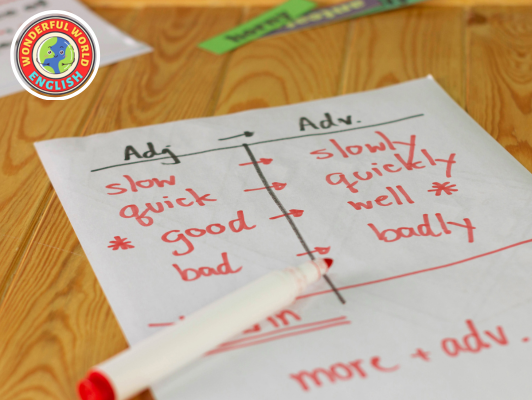
Nouns and Naming Words
Nouns are foundational elements in the English language and serve as naming words for people, places, things, and ideas.
They are categorized into common nouns and proper nouns, each serving a unique purpose in communication.
Common Nouns
Common nouns are general names for a person, place, thing, or idea.
They are not capitalized unless they begin a sentence.
In the context of vocabulary suitable for 2nd graders, consider the words “ball,” “dog,” and “cat.”
These words represent general items or animals that can be found in many places and are not specific to a singular identity.
- For example:
- When she plays in the yard, she often throws a ball.
- A dog is known to be a loyal pet.
- The cat sat quietly on the windowsill.
Proper Nouns
Proper nouns, in contrast, refer to specific names of people, places, organizations, or sometimes things.
They are always capitalized, no matter where they occur in a sentence.
Proper nouns relevant to 2nd-grade vocabulary could include “Lucy” and “John,” which are specific names given to individuals.
- For instance:
- Lucy is reading her favorite book in the library.
- John loves to play with his toy ball.
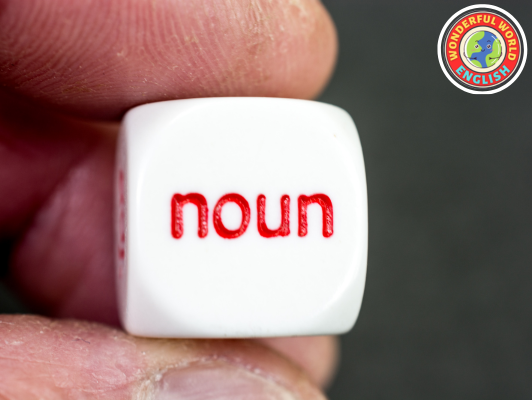
Communication Skills
In second grade, children expand their ability to communicate by learning to formulate sentences and understanding how to use questions to share information.
These foundational skills are critical for both speaking and listening activities.
Formation of Simple Sentences
Second graders learn to construct simple sentences that can express their thoughts clearly.
They are expected to use a subject and a predicate to create sentences that make sense and are grammatically correct. For example, She runs or They read.
Question Phrases
Asking and answering questions are pivotal skills developed during this year.
Second graders are taught to use question phrases such as who, what, where, when, and why to gain information and to comprehend stories more deeply.
When they ask or answer questions about a narrative, they demonstrate their understanding of the story and the mechanics of dialogue.
For instance, “Why did the character climb the tree?” or “Where did they find the treasure?”
Reading Comprehension
Improving reading comprehension is vital for second graders as they develop the ability to understand and analyze text.
Mastery of reading comprehension enables students to grasp the plot, relate to characters, and enjoy the content of the book they read.
Understanding the Text
When second graders read, it’s important for them to recognize words and understand the text as a whole.
A key aspect of understanding is identifying the main idea and supporting details within a story.
Reinforcing these skills improves their ability to follow the plot and engage with the characters.
Structured reading sessions and asking questions about the content can enhance their comprehension.
Vocabulary activities are also a useful tool.
Context Clues
Utilizing context clues is a fundamental strategy second graders can employ to deduce the meaning of unfamiliar words and enhance comprehension.
Context clues can be found in the words or sentences surrounding an unknown word.
Teachers and caregivers can guide students through this process by posing questions like, “What do you think this word means based on the rest of the sentence?”
Resources like K5 Learning worksheets provide practice in using context clues within reading material.
This technique aids in piecing together the narrative and understanding the roles different characters play in the story.
For some help in improving the reading skills of a child (or children), check out the guide below!
Related: How to Improve Reading Skills of a Child – Teacher’s Tips
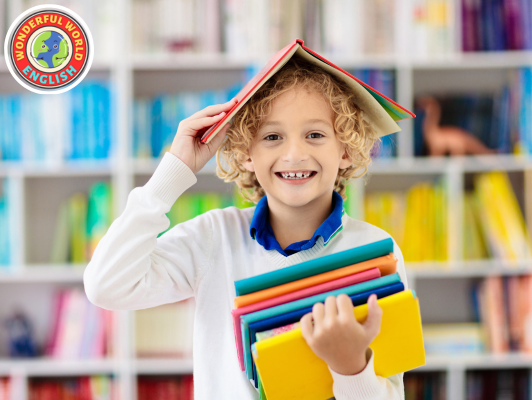
Numeracy and Counting
In the realm of second-grade mathematics, mastering numeracy and counting is fundamental.
Students expand their understanding of numbers and how to manipulate them through basic operations.
Numbers and Numerals
Second graders learn to distinguish between numbers—the concept of quantity—and numerals, the symbols used to represent numbers.
They practice counting sequenced numbers and understand terms such as even, odd, greater than, and less than.
Recognizing numbers in both digit and word form is also crucial at this stage.
A child might count from 1 to 100 and identify numbers on a number line to solidify their comprehension.
Basic Operations
Addition and subtraction serve as the cornerstone basic operations in second-grade math.
Students should be able to add and subtract numbers within 20 accurately and begin attempting problems that involve larger numbers up to 100.
They use various strategies, like counting on or counting back, to find sums and differences.
Tools such as:
- Number charts
- Counting objects
- Visual representation on paper
are often utilized to aid in understanding these concepts.
Geared with this knowledge, children can solve real-world problems and reason mathematically.
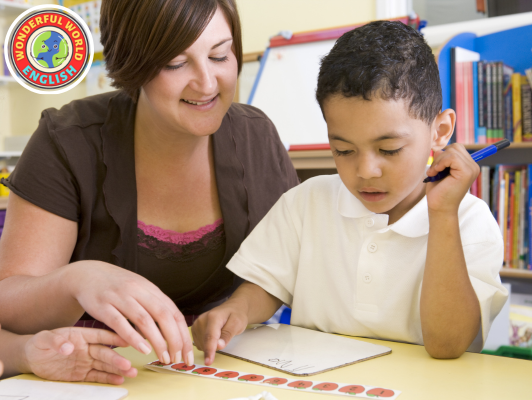
Everyday Vocabulary
The vocabulary for 2nd graders integrates words from their immediate environments, such as home, school, and meal times.
This helps to reinforce their understanding of the world around them. Here are some specific examples of everyday vocabulary within these contexts.
Home and Family
- Mom and Dad are often two of the first relational words a second grader learns; they signify parental figures and caregiving.
- “Family” usually refers to a group of related people, often living together, which might include siblings, grandparents, or even pets.
- The word “home” is used to describe the place where one lives, often a house or apartment.
School and Classroom
- A teacher is an individual who leads learning in a classroom; they provide guidance and knowledge to students.
- “Classroom” is the specific area within a school where learning takes place, consisting of desks, a blackboard, and educational resources.
- The term “school” encompasses the larger educational environment where children spend much of their day learning various subjects.
Food and Drinks
- An apple is a common fruit often associated with health and is a popular snack in school lunchboxes.
- “Water,” an essential drink, is vital for hydration and is a core component of nutrition education.
- “Food” is a broad term that covers anything that is eaten to provide nutritional support to the body.
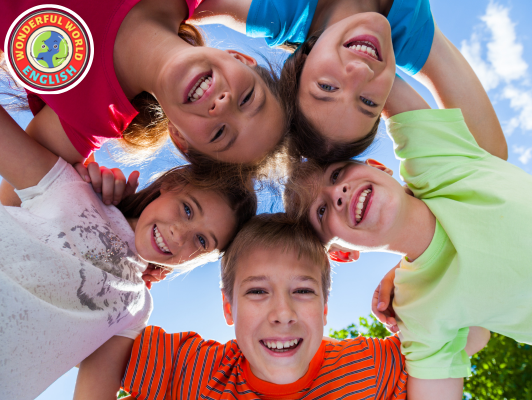
Colors and Shapes
Introducing children to colors and shapes is fundamental in developing their descriptive language and recognition skills.
In the realm of colors, emphasis is placed on the primary colors, while in shapes, focus is given to easily identifiable geometric figures.
Primary Colors
Primary colors are the backbone of color theory. They cannot be made by mixing other colors.
For 2nd graders, these are the first set of colors they learn to identify and use for color mixing.
The three primary colors are:
- Red: A vibrant color often associated with strong emotions.
- Blue: A cool and calming color found abundantly in nature.
Common Shapes
When it comes to shapes, there are a few basic geometrical figures that children learn to recognize early on.
These shapes form the building blocks for understanding more complex figures.
Two common shapes taught in the second grade are:
- Circle: Defined by its perfectly round shape, a circle is a simple geometric shape without corners.
- Square: Characterized by four equal sides and four right angles, a square is known for its regularity and is a common shape found in block play.
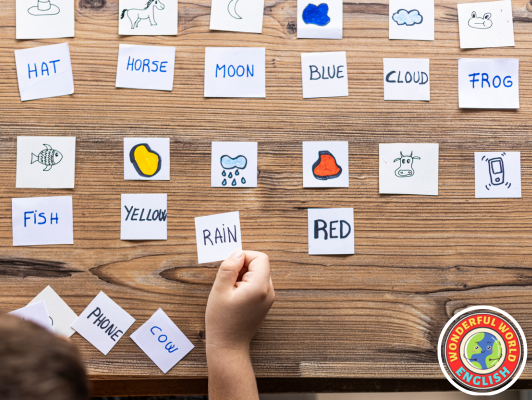
Time and Sequence
Teaching second graders about time and sequence helps them grasp the concept of order and chronology, which are critical for understanding narratives and schedules.
This foundation is fundamental in enhancing their ability to plan and organize both their thoughts and activities.
Days of the Week
The week consists of seven days, starting with Monday and ending with Sunday.
For second graders, familiarization with these days is crucial. Here is a quick breakdown:
- Monday: Often considered the first day of the school week.
- Tuesday: Follows Monday and is the second day.
It is important for students to recognize that each day has a specific name and position in the week, providing a scaffold for understanding sequences in broader contexts.
Order of Events
Understanding the order of events is essential for students to follow and describe processes or stories.
Key time order words include:
- First: Signifies the starting point.
- Next: Comes after ‘first’ and indicates a sequence.
- Last: Refers to the final part in a sequence.
Students may practice with sentences such as:
- She ties her shoes first.
- She puts on her coat next.
- She grabs her backpack last.
Incorporating these terms into daily routines can help reinforce their understanding and use of sequence vocabulary.
Emotions and Feelings
Teaching second graders about emotions and feelings equips them with the language they need to express themselves and comprehend others.
This key literacy component aids in the development of their emotional intelligence.
Expressing Emotions
Children often experience intense emotions and require the vocabulary to share how they feel.
For instance, when a child says, “I am happy,” they might be expressing a sense of joy or contentment due to a positive event.
Conversely, stating “I am sad” reflects a feeling of unhappiness or discomfort.
Supporting them in articulating these feelings with phrases like “I am excited” or “I am angry” helps them convey more complex emotions, such as anticipation or frustration.
| Emotion | Words to Express It |
|---|---|
| Happy | joyful, pleased, content |
| Sad | unhappy, sorrowful, downcast |
| Excited | thrilled, eager, enthusiastic |
| Angry | irritated, upset, cross |
Understanding Others
Teaching children about emotions extends beyond self-expression; it also involves understanding what others feel.
Second graders learn to identify clues like facial expressions, body language, and tone of voice to interpret others’ emotions.
- Happy: A smile or laughter can indicate that someone is happy.
- Sad: Tears or a frown may suggest that someone is feeling sad.
- Excited: Jumping up and down or clapping hands might show excitement.
- Angry: Furrowed brows or a loud voice could be signs of anger.
By recognizing these expressions in others, children can develop empathy and better navigate social interactions.
They learn that their peers might feel just like them or might have different responses to similar situations, emphasizing the diversity of emotional experiences.
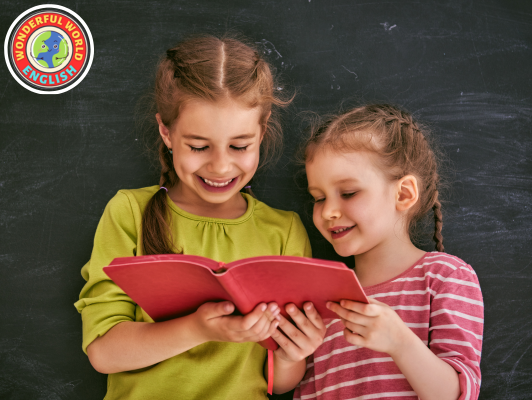
Science and The Natural World
The curriculum for 2nd graders introduces them to fundamental concepts about the environment, living organisms, and basic physics.
These topics encourage young learners to observe and explore the world around them.
Weather and Seasons
- Rain: Rain is water that falls from clouds in the sky. It is essential for the life cycle of plants.
- Snow: Snow is a form of precipitation that occurs when temperatures drop below freezing point.
- Sun: The sun provides light and warmth, necessary for the growth of plants and the sustenance of animals.
Plants and Animals
- Tree: A tree is a perennial plant with an elongated stem, or trunk, supporting branches and leaves.
- Dog: A dog is a domesticated animal known for its loyalty and is a common subject in life science studies about mammals.
Physical Sciences
- Water: Water is a transparent, tasteless, odorless liquid that forms the seas, lakes, rivers, and rain and is the basis of the fluids of living organisms.
- Gravity: Gravity is the force that attracts a body toward the center of the earth or toward any other physical body having mass.
- Reflect: Light can reflect off surfaces, and this concept is often explored through simple physics experiments in class.
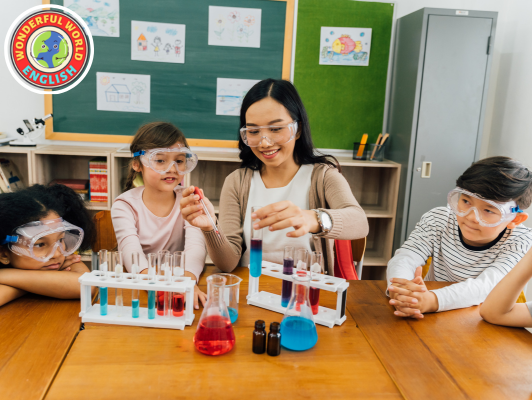
Social Studies and Communities
In second grade, social studies focus on the elements that make up communities, such as family roles, professions, and geography.
This provides students a foundation to understand their own and others’ places within a community.
Families and Relationships
Families are central to understanding social studies as they are the first example of a community a child experiences.
A typical family might include a mom, who could be a teacher sharing knowledge with her students, and a dad, who may serve as a police officer maintaining the safety of the community.
These roles within the family help children learn about relationships and social roles.
For a FREE lesson plan and PPT on the subject of family vocabulary, the link below has you covered!
FREE Resouce: Meet My Family – Free Lesson Plan & PPT for ESL Teachers
Jobs and Occupations
Jobs and occupations are a vital part of any city or community.
These can range from teachers, who educate the next generation, to police officers, who work to keep the streets safe.
Understanding different occupations gives children insight into how a community functions and the interdependence of various roles.
Maps and Locations
Grasping the concept of maps and locations is essential in the study of social studies.
A map serves as a scaled-down representation of a city or community, which can include places like home, school, and local landmarks.
It equips students with the skills to navigate their city and understand their spatial relationship to other parts of the community.
Vocabulary parades are excellent opportunities to get students involved in the learning process while having fun.
For a complete guide on how you can give your students a day to remember while improving their vocabulary skills, check out the link below!
Related: Ideas for Vocabulary Parade: Ultimate Guide
Health and Wellness
Teaching children the importance of health and wellness at a young age sets the foundation for a lifetime of healthy habits.
This section covers the essentials of personal hygiene and healthy habits, focusing on practical activities and behaviors that second graders can incorporate into their daily routines.
Personal Hygiene
Personal hygiene is crucial for maintaining health and preventing the spread of germs.
Children should learn that washing their hands with soap and water is one of the most effective ways to remove dirt, bacteria, and viruses.
They should do so before eating, after using the restroom, and after playing outside.
Bathing regularly is also important to keep their body clean and free from germs.
- Daily Hygiene Checklist:
- Wash hands
- Brush teeth
- Bath or shower
Healthy Habits
Healthy habits include a balanced approach to eating and physical activity.
Kids should be encouraged to eat a variety of foods, especially fruits and vegetables, which provide essential nutrients.
Whole grains, lean proteins, and dairy contribute to a well-rounded diet.
Second graders should also understand the benefits of exercise, as it strengthens their muscles, improves heart health, and boosts mood.
- Tips for Healthy Eating and Exercise:
- Eat a rainbow of fruits and vegetables every day.
- Engage in at least 60 minutes of moderate to vigorous physical exercise.
For some insights and tips into effectively teaching ESL students vocabulary, the guide below has you covered!
Related: How to Teach Vocabulary to ESL Students: Teacher’s Guide
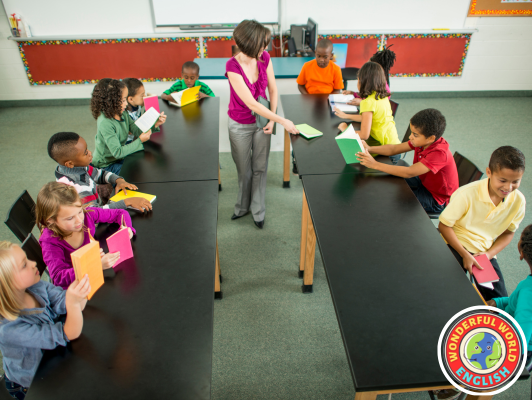
Conclusion
Expanding a second grader’s vocabulary is pivotal in the journey of early literacy.
This stage is marked by their exposure to diverse texts, enhancing their reading, comprehension, and communication skills.
Children can express themselves more clearly and delve into storytelling with rich detail by learning new words across various themes—from everyday terms to academic concepts.
The process goes beyond mere memorization, emphasizing the understanding and contextual use of words.
Such a foundation bolsters their language skills and prepares them for more complex linguistic tasks, setting solid groundwork for their future learning endeavors.
We hope you found value in this guide.
Have a wonderful day!
Image Attribution: All images licensed via canva.com
